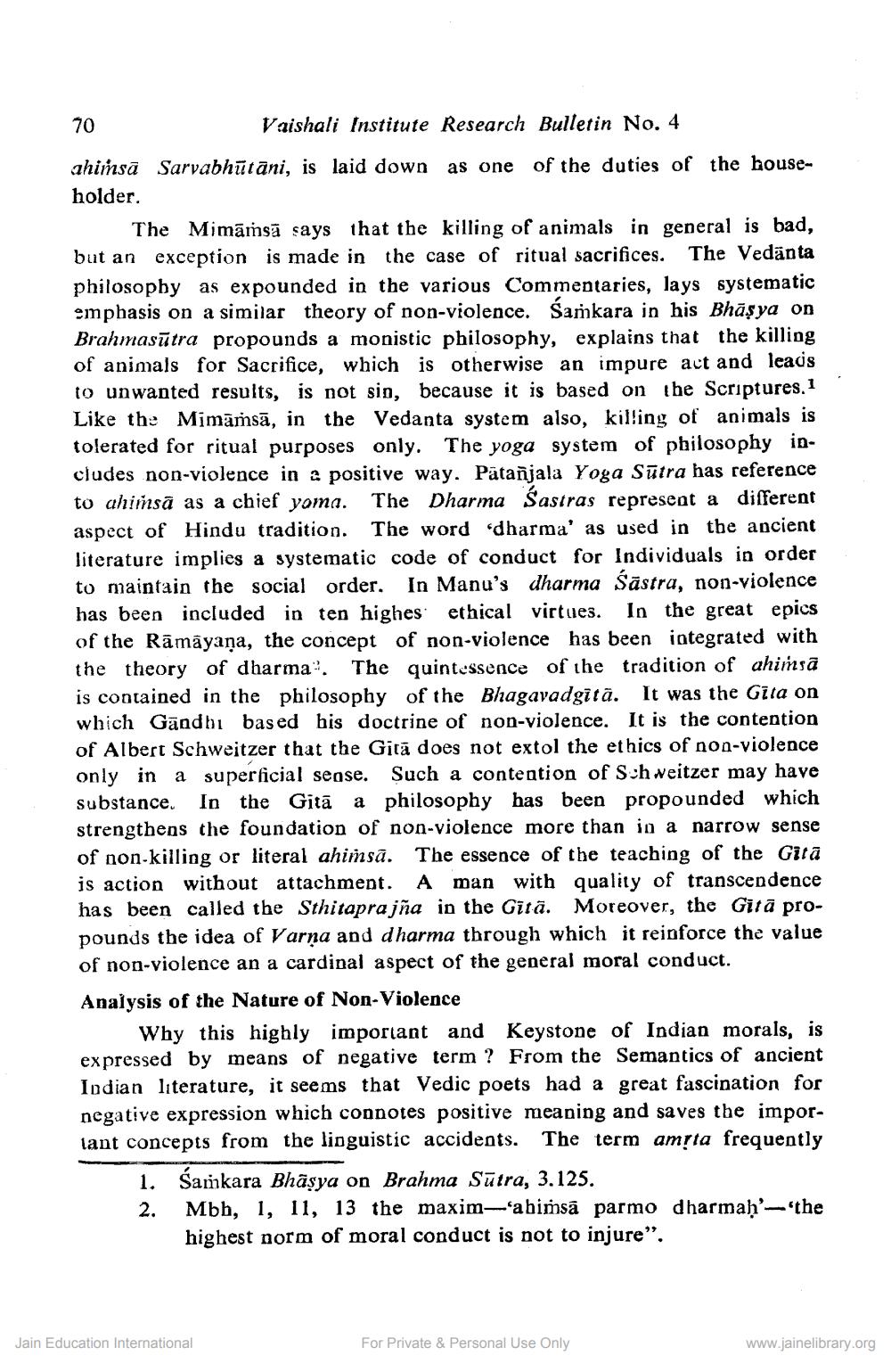________________
Vaishali Institute Research Bulletin No. 4
ahimsa Sarvabhūtāni, is laid down as one of the duties of the householder.
70
The Mimamsa says that the killing of animals in general is bad, but an exception is made in the case of ritual sacrifices. The Vedanta philosophy as expounded in the various Commentaries, lays systematic emphasis on a similar theory of non-violence. Śamkara in his Bhāṣya on Brahmasutra propounds a monistic philosophy, explains that the killing of animals for Sacrifice, which is otherwise an impure act and leads to unwanted results, is not sin, because it is based on the Scriptures. 1 Like the Mimamsa, in the Vedanta system also, killing of animals is tolerated for ritual purposes only. The yoga system of philosophy includes non-violence in a positive way. Patañjala Yoga Sutra has reference to ahimsa as a chief yoma. The Dharma Sastras represent a different aspect of Hindu tradition. The word 'dharma' as used in the ancient literature implies a systematic code of conduct for Individuals in order to maintain the social order. In Manu's dharma Sastra, non-violence has been included in ten highes ethical virtues. In the great epics of the Rāmāyaṇa, the concept of non-violence has been integrated with the theory of dharma. The quintessence of the tradition of ahimsa is contained in the philosophy of the Bhagavadgita. It was the Gita on which Gandhi based his doctrine of non-violence. It is the contention of Albert Schweitzer that the Gita does not extol the ethics of non-violence only in a superficial sense. Such a contention of Schweitzer may have substance. In the Gia a philosophy has been propounded which strengthens the foundation of non-violence more than in a narrow sense of non-killing or literal ahimsa. The essence of the teaching of the Gita is action without attachment. A man with quality of transcendence has been called the Sthitaprajña in the Gitä. Moreover, the Gitā propounds the idea of Varna and dharma through which it reinforce the value of non-violence an a cardinal aspect of the general moral conduct.
Analysis of the Nature of Non-Violence
Why this highly important and Keystone of Indian morals, is expressed by means of negative term? From the Semantics of ancient Indian literature, it seems that Vedic poets had a great fascination for negative expression which connotes positive meaning and saves the important concepts from the linguistic accidents. The term amṛta frequently
1. Samkara Bhasya on Brahma Sutra, 3.125.
2.
Mbh, 1, 11, 13 the maxim-abimsā parmo dharmaḥ'-'the highest norm of moral conduct is not to injure".
Jain Education International
For Private & Personal Use Only
www.jainelibrary.org




